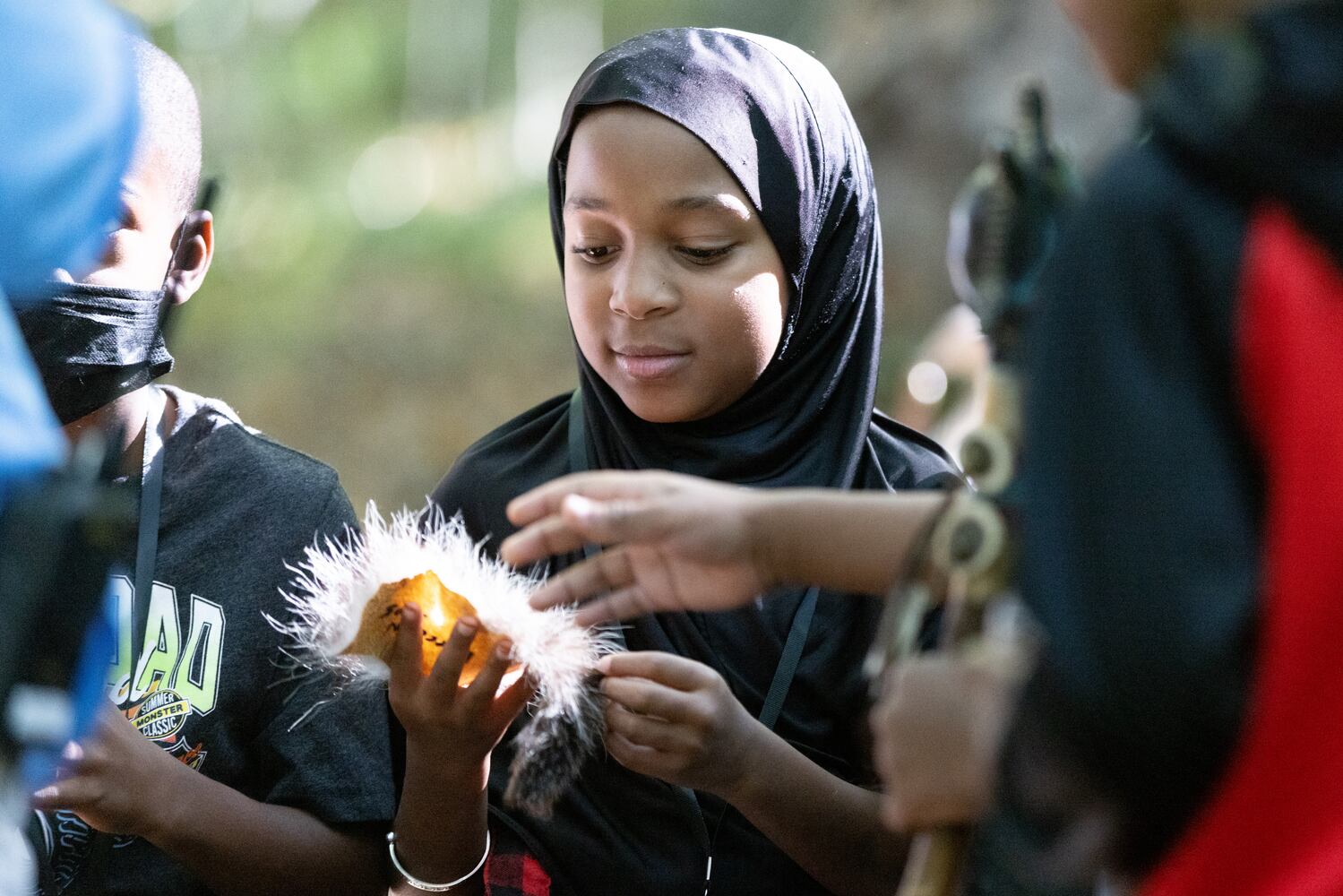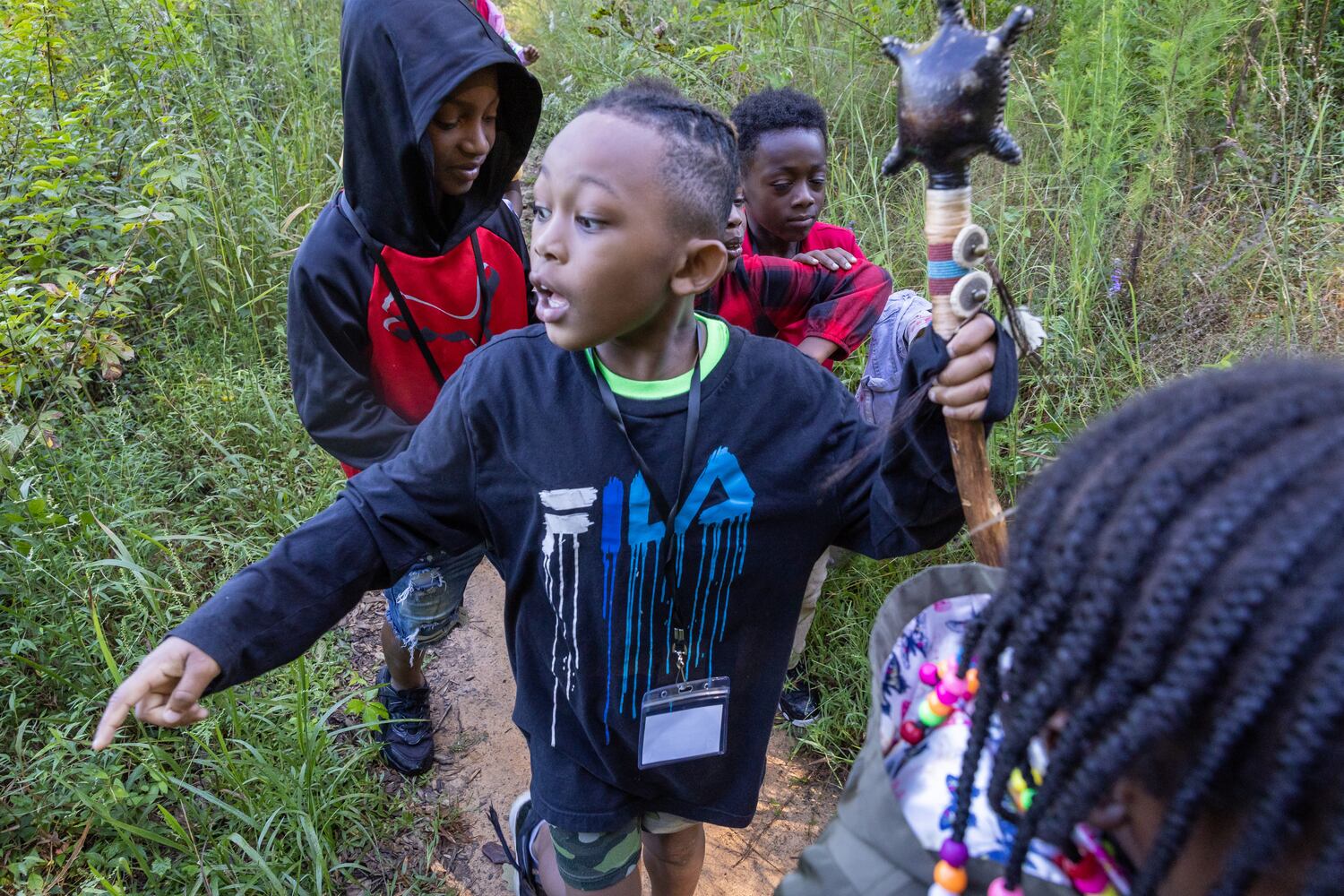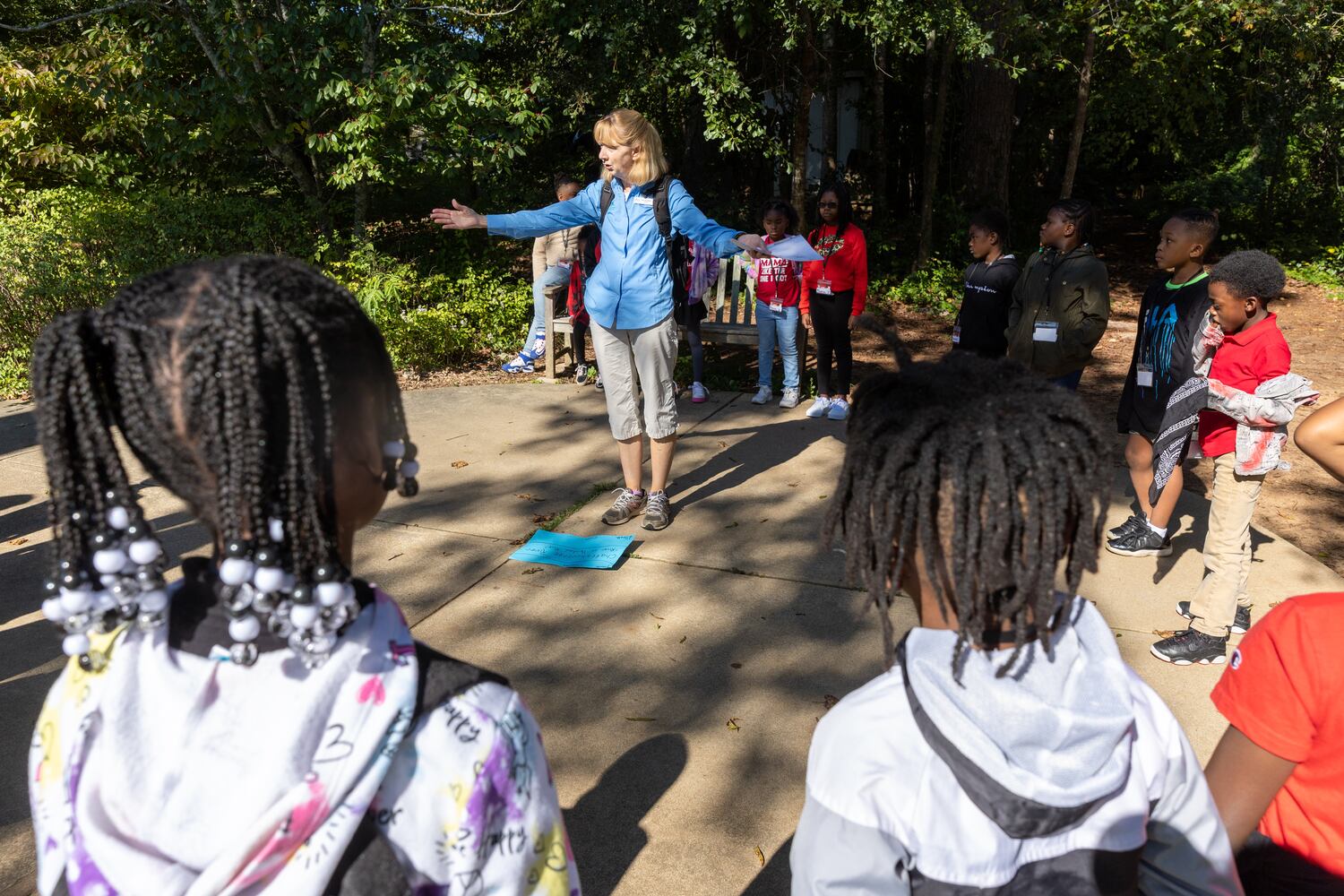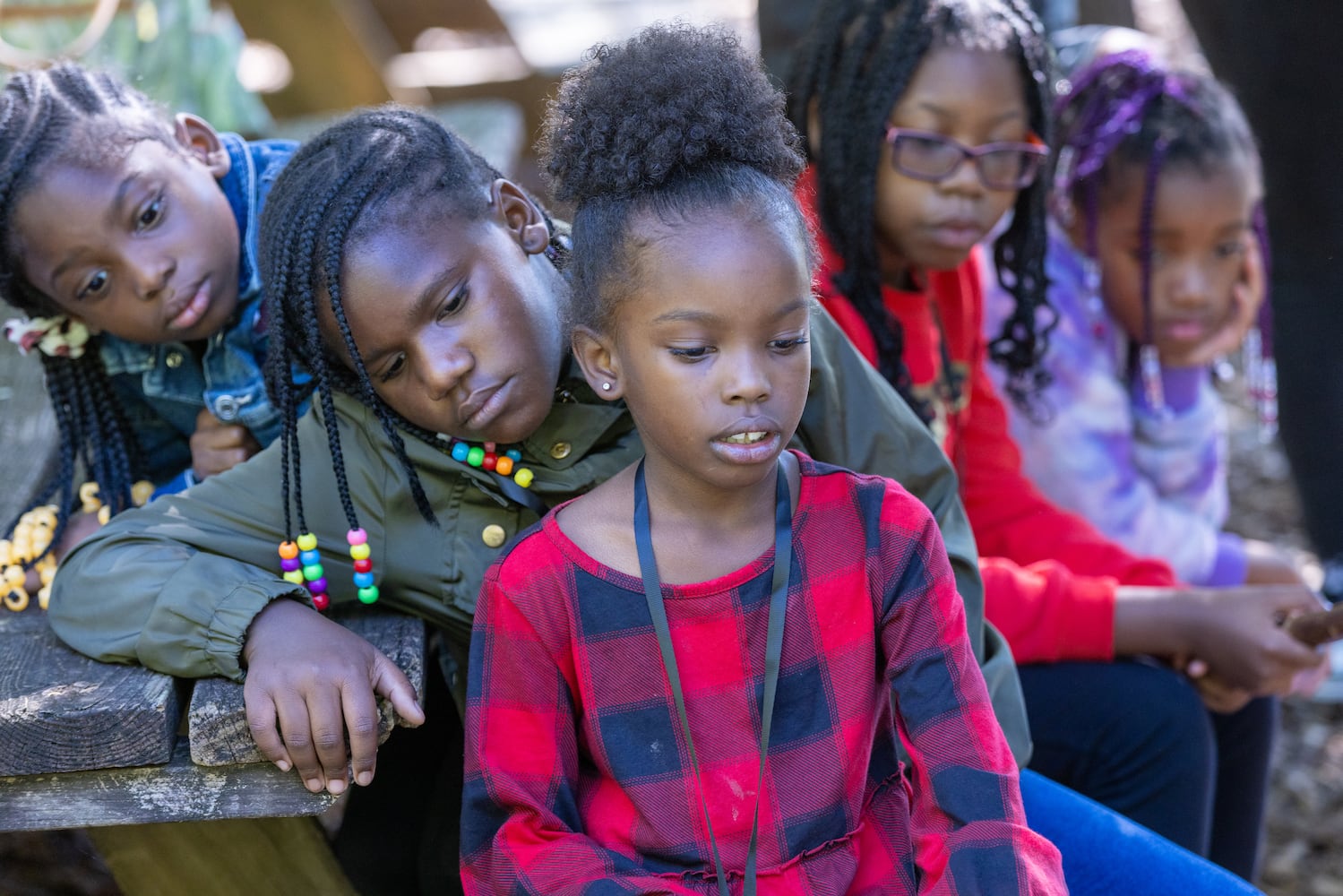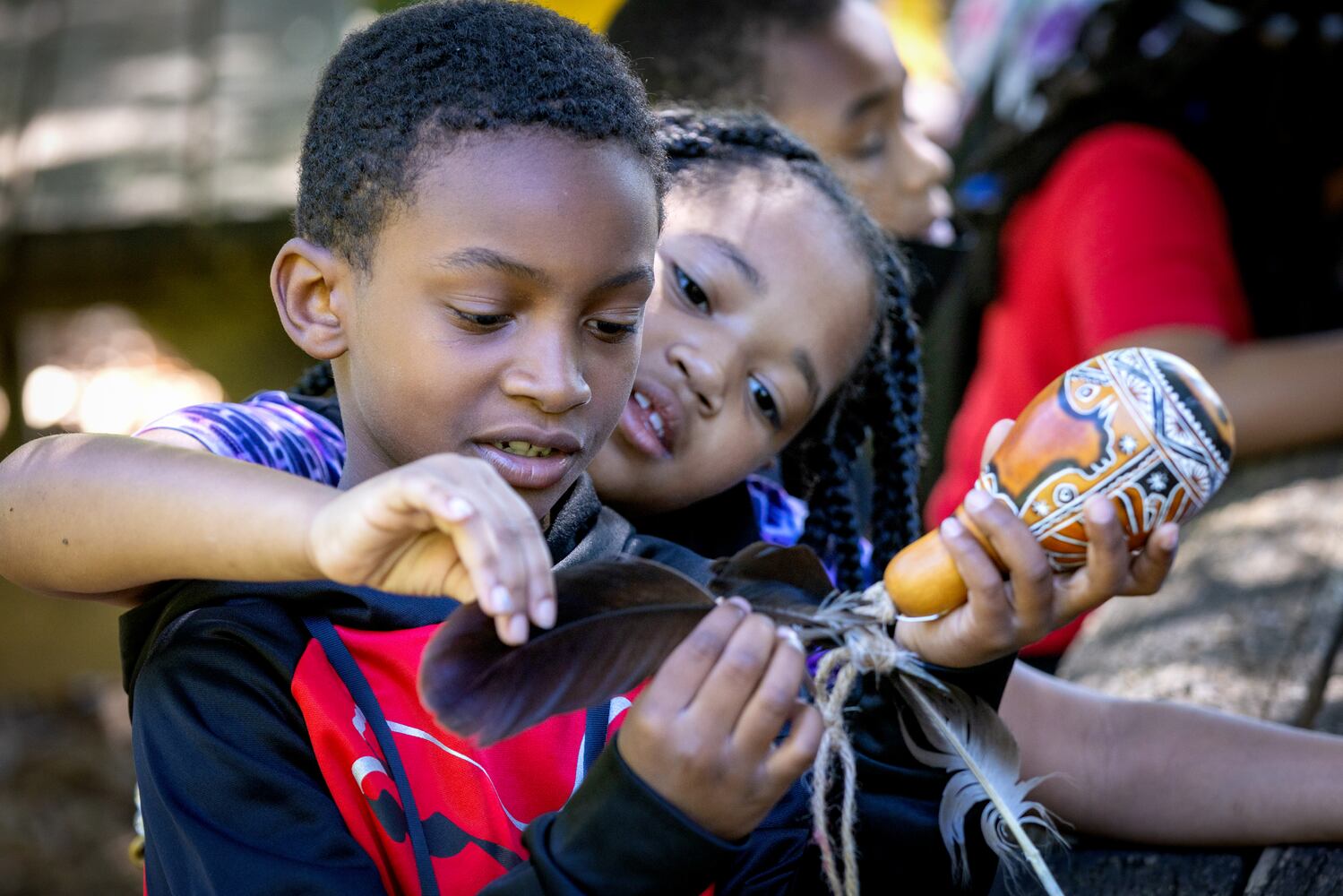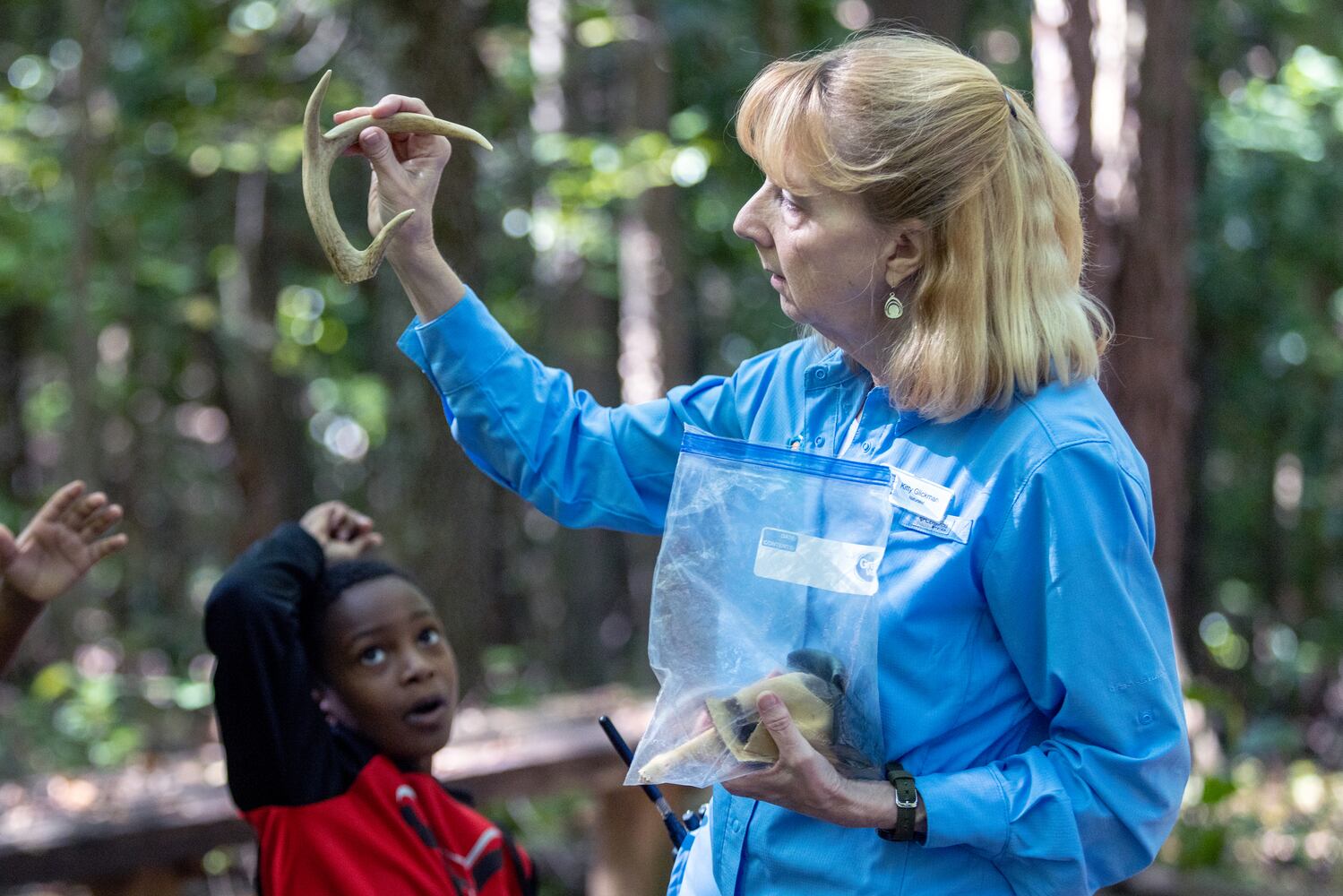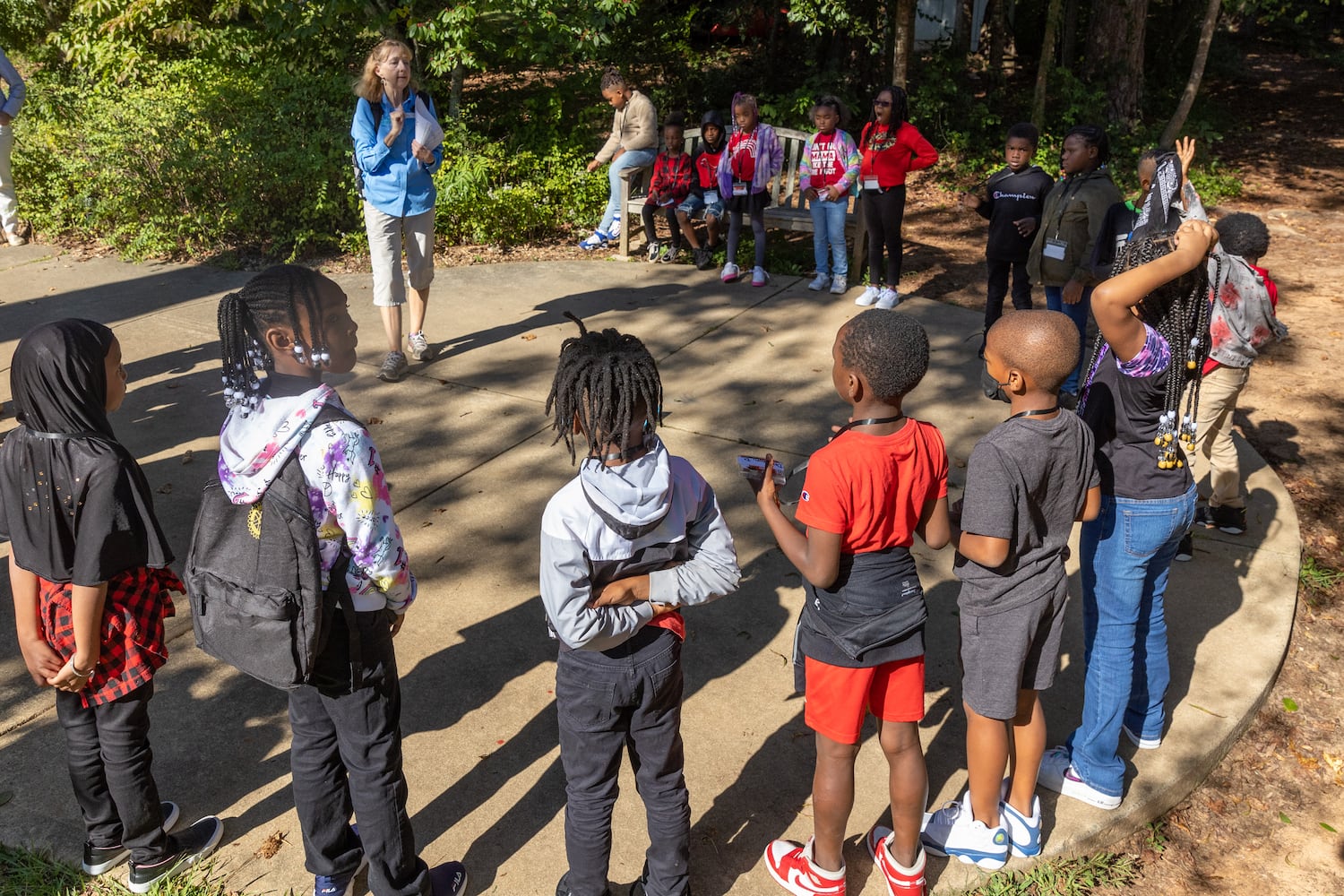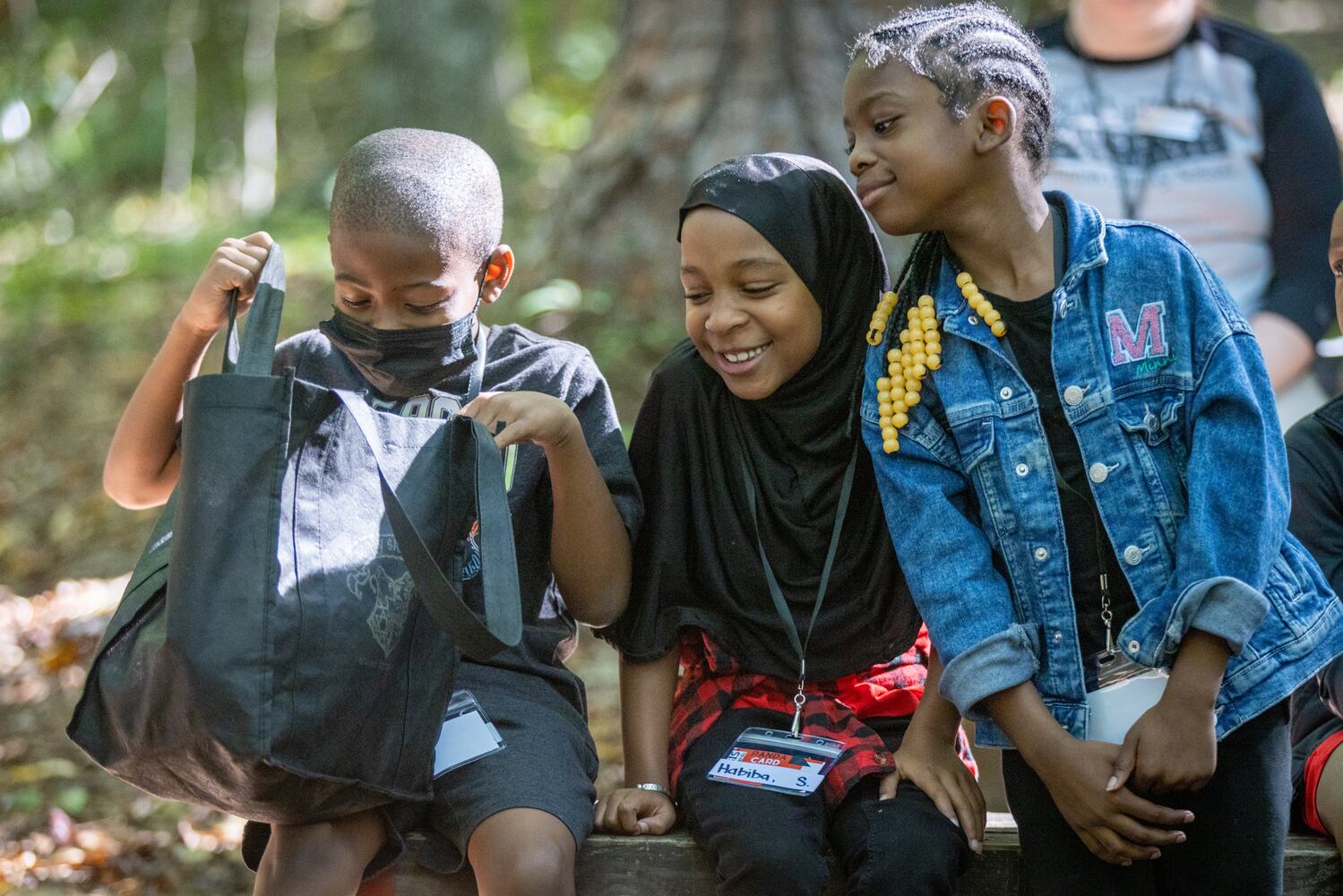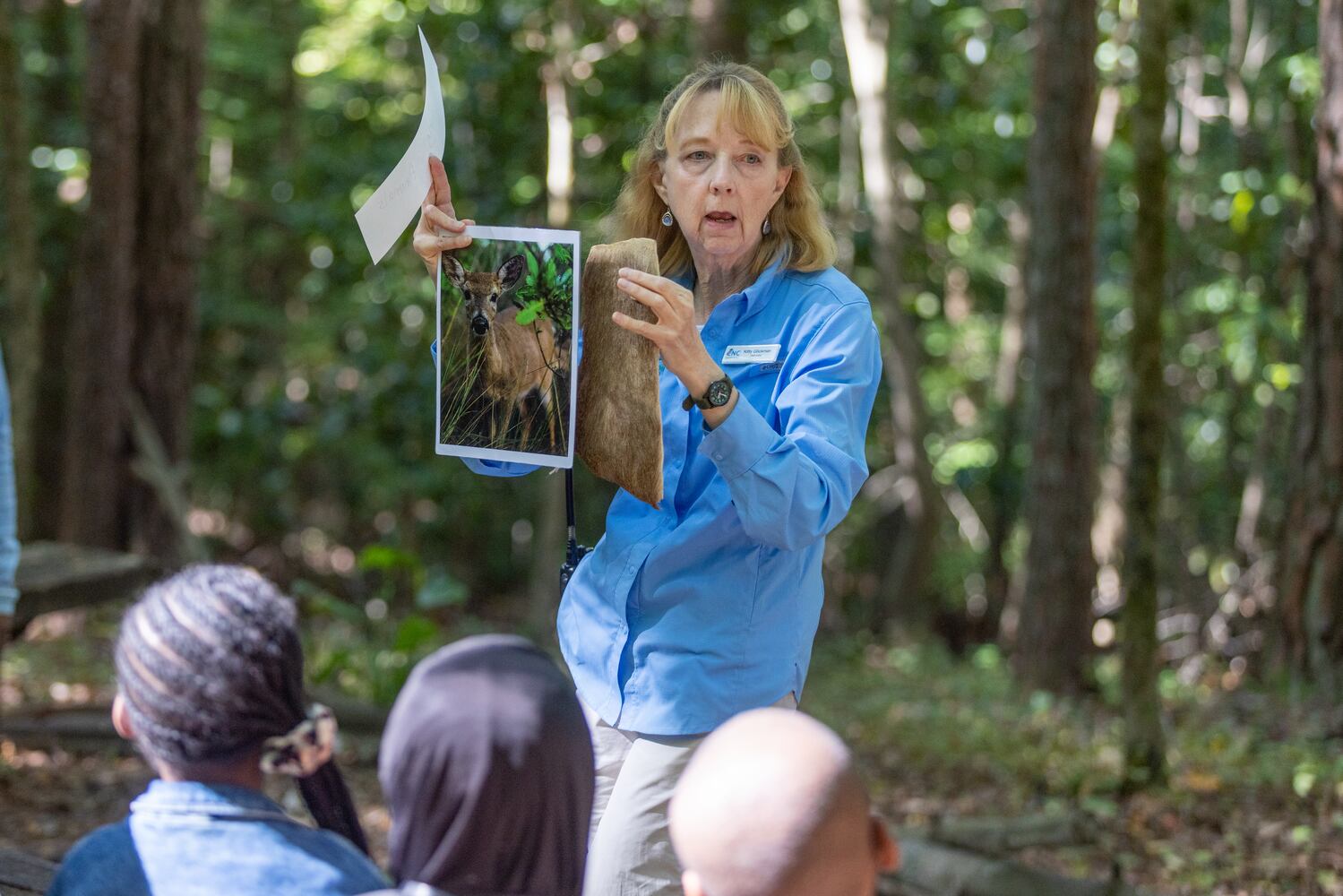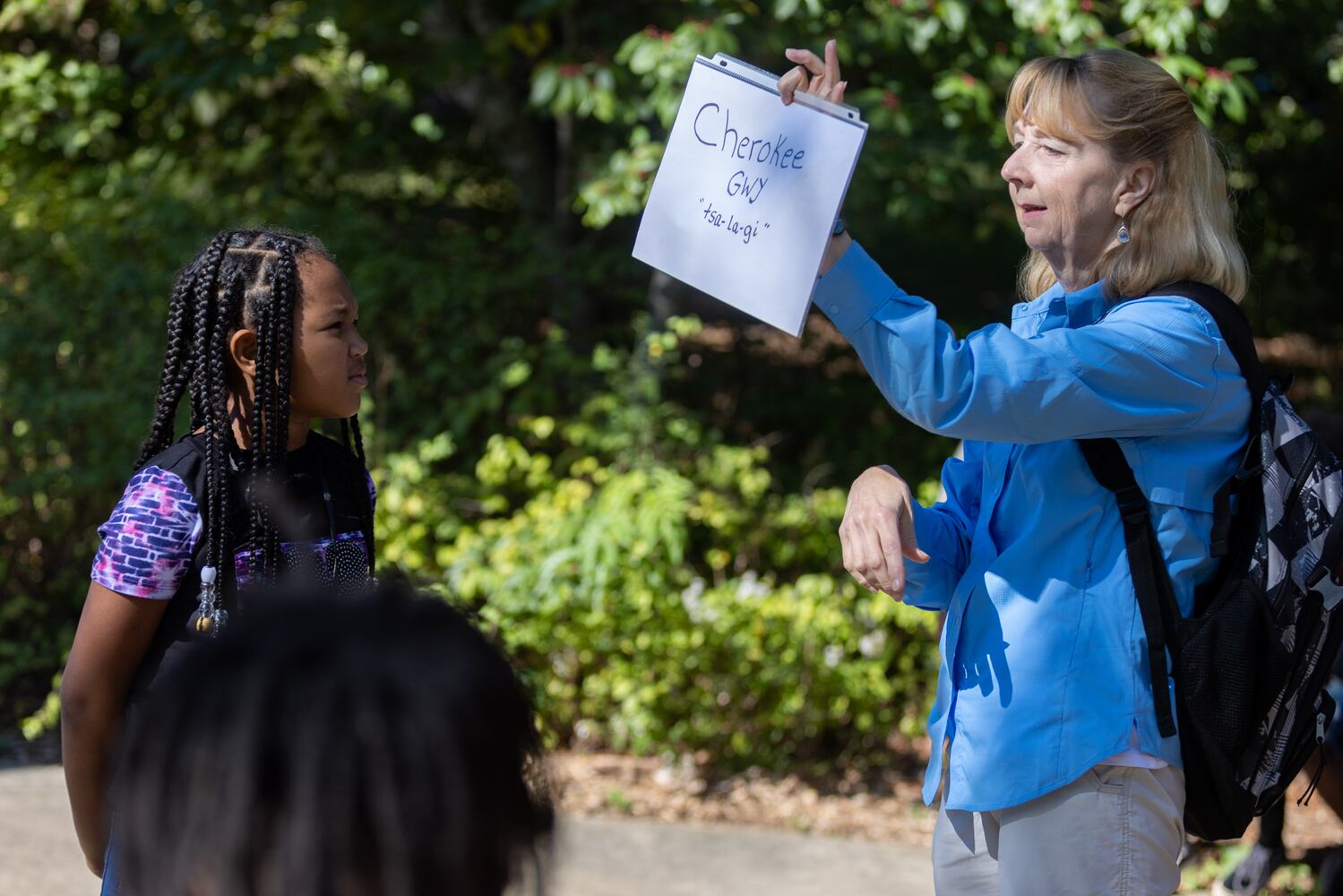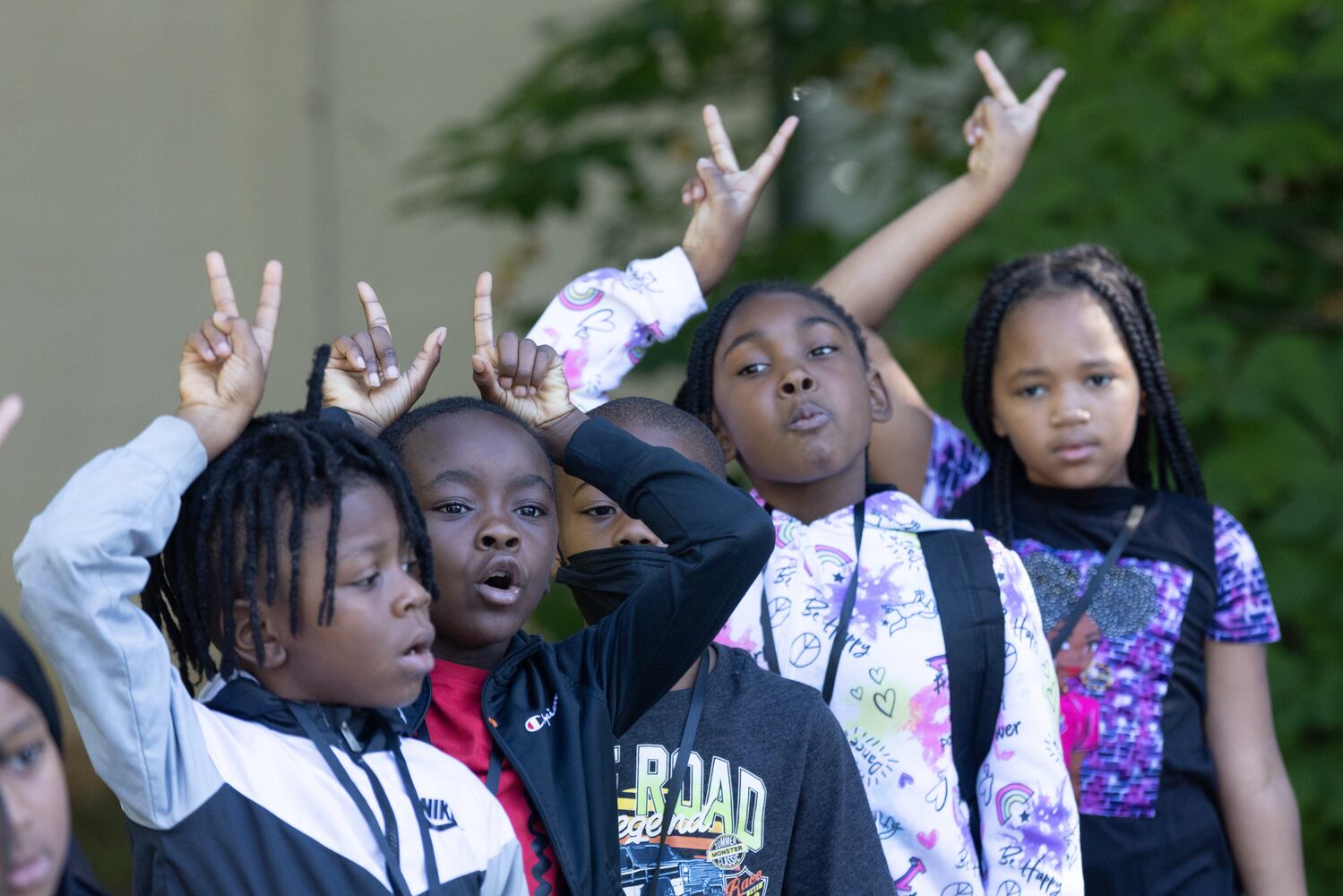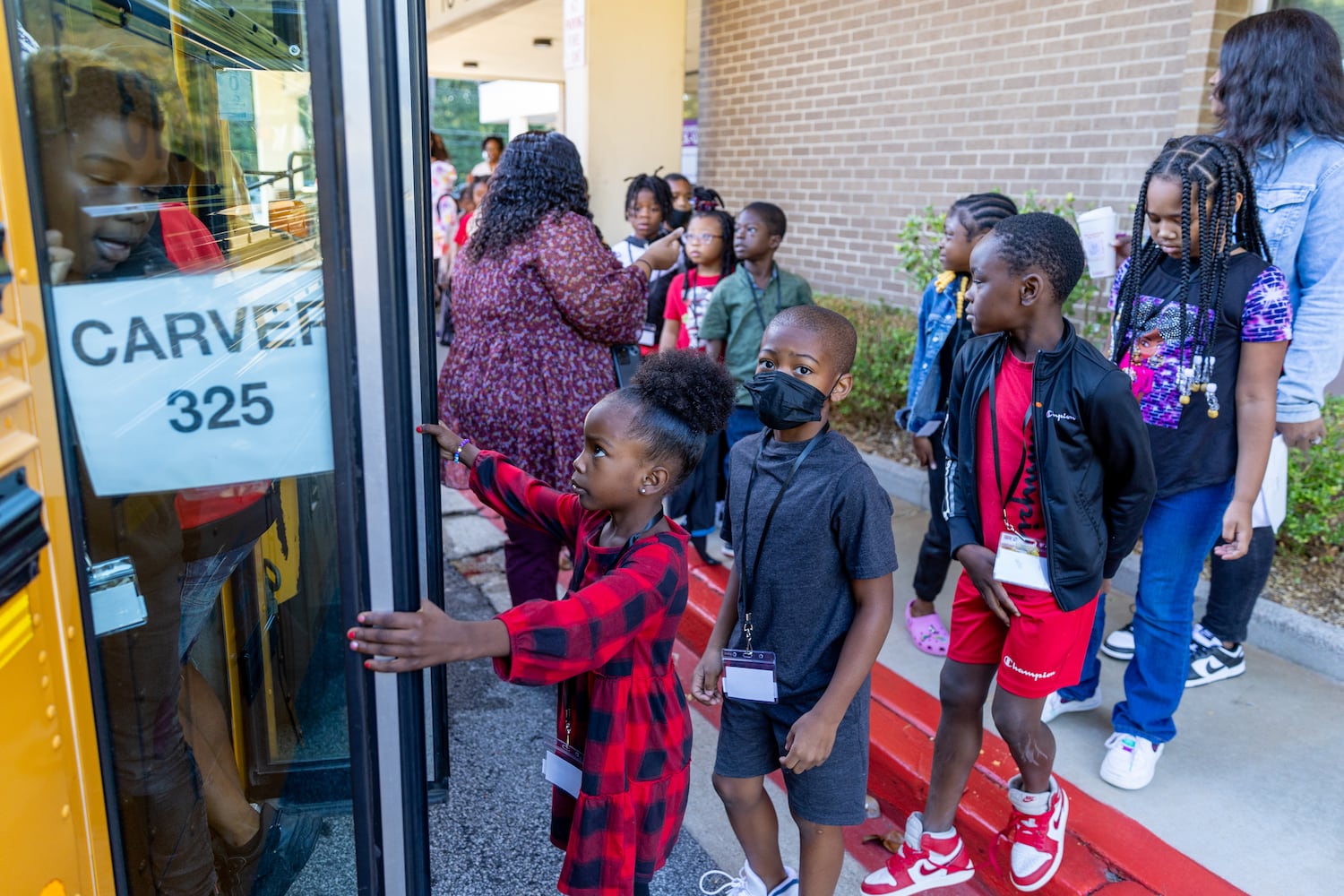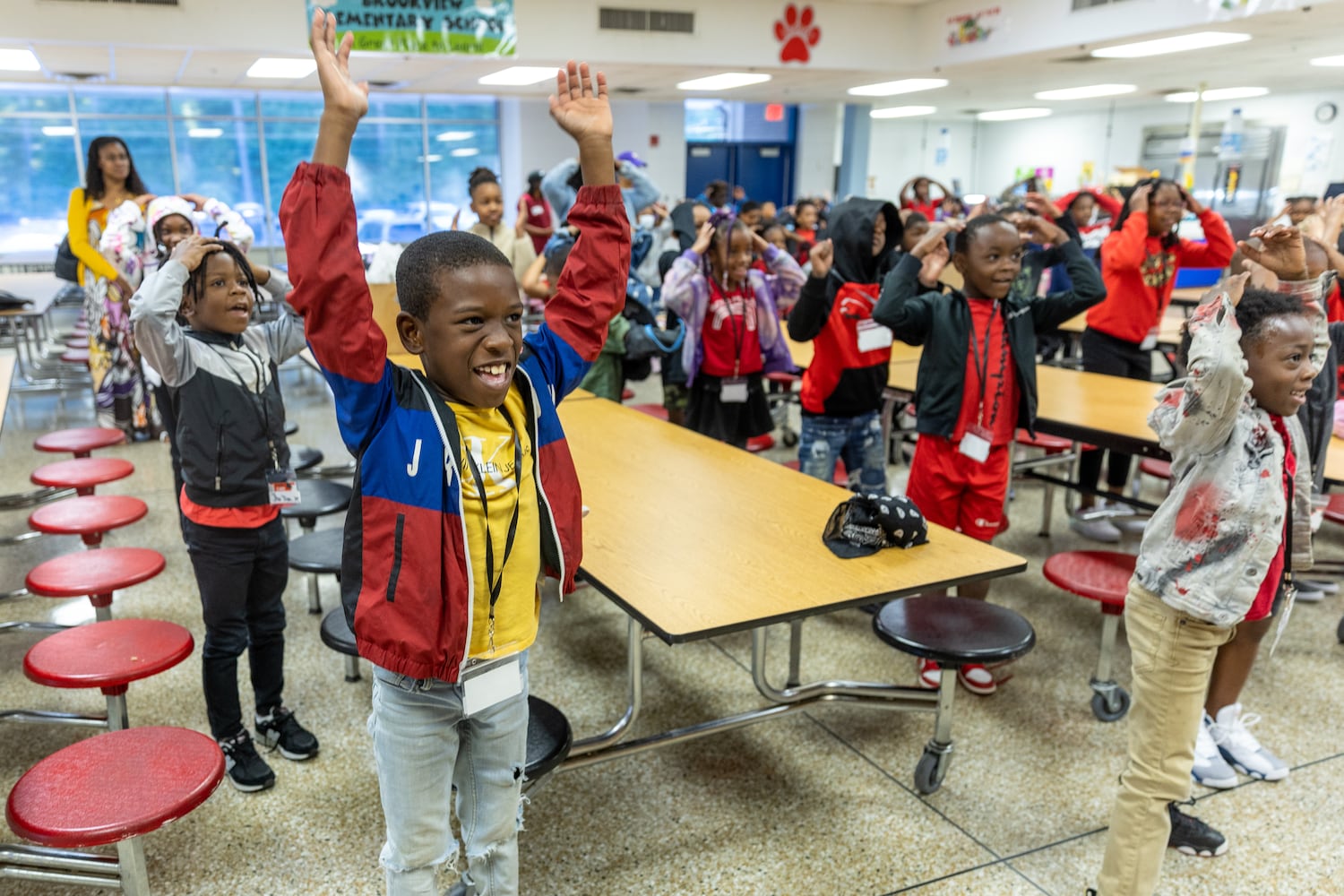The morning routine was underway in a windowless Brookview Elementary School classroom where strands of twinkle lights provided a soft glow. Then, the teacher announced it was time to line up.
Excitement bubbled as second graders at the Fulton County school stowed away science notebooks and waited in an increasingly boisterous cafeteria for buses to take them on the year’s first field trip.
What’s something you might see, asked teacher Jelisa Miller.
A wolf, a giraffe, a monkey, a tree, the kids guessed.
“When we come back, I’m going to ask you this question and your answers will be completely different,” she said.
Their destination: The Chattahoochee Nature Center in Roswell, an hourlong drive north from the East Point school. It’s one of many metro Atlanta sites that’s seen a rebound in student visits as field trips resume after a pandemic pause.
The return of class outings has bolstered nonprofit venues that went nearly dormant as COVID-19 spread in 2020. In the spring, popular attractions such as the Atlanta History Center, the Georgia Aquarium, Zoo Atlanta and the nature center, which typically host tens of thousands of students annually, saw field trip attendance soar, an uptick that’s growing this school year.
After two years in which trips were halted or reduced, Fulton County Schools has kicked off a new, expanded program that aims to give every child in the 90,000-student district a chance to visit an educational venue.
Schools in Gwinnett County took field trips last year and “are wide open now,” said Eric Thigpen, the district’s executive director of academic support. Clayton County Public Schools, the metro Atlanta system that waited the longest to reopen buildings, permitted certain field trips last year with safety restrictions and expects the number to grow this year.
“For 18 months, we were absolutely quiet,” said the nature center’s president and CEO, Natasha Rice. “For us, this is a huge deal because everybody ... wants to see kids in nature.”
On the sunny September day when Brookview students visited, they hiked up a hillside trail and sat under a canopy of green leaves to learn how Creek and Cherokee Indians built shelters and made clothes many years ago.
“What kind of food do you think they ate? Did they get to go to Kroger?” asked naturalist Kitty Glickman.
The children gave a resounding “no.”
So where did they find food?
“Walmart?” asked a student.
That launched the next lesson on hunting and berry picking. Then students each took a big whiff of wild onions.
Fulton budgeted more than $4 million over three years to expand field trip offerings. The Cultural Kaleidoscope initiative is one element of the district’s federally funded $169 million plan to help students recover from learning setbacks suffered during the pandemic.
The program, whose tagline is “expeditions for everyone,” is aimed at exposing all students to memorable, hands-on learning beyond the classroom, said Amanda Smith, a museum teaching specialist who develops such outings for the district. Each grade will go to a different site, from botanical gardens and the symphony to art and science museums. In the past, schools found their own funding to pay for any trips, which took place on a school-by-school basis.
When in-person learning returned, field trips lagged, as many large metro districts dealt with transportation challenges and navigated ongoing safety concerns, Rice said.
But the schedule is back to busy: Rice expects at least 11,000 students to visit by the end of January, followed by more next spring.
Last school year, Atlanta’s Alliance Theatre produced only one show as a student matinee, “A Christmas Carol,” and just 7,000 students saw it or participated in programming. That’s a mere 15% of the number that experienced the theater before the pandemic.
This fall, student shows are fully back, starting with sold-out performances of “The Incredible Book Eating Boy.” The field trip program is in such demand, the theater added performances of the musical, based on a children’s book about a boy who struggles with reading.
Christopher Moses, who oversees the Alliance’s educational efforts, has loved hearing the “unbridled laughter” of young audiences after “so much doom and gloom.”
In 2019, researchers from the University of Arkansas studied the benefits of field trips to the Alliance and other Atlanta cultural venues. They found evidence that students who visited had higher test scores, more interest in school and a greater understanding of those with different opinions.
“If we can increase hope and increase tolerance and you’re also doing better in school? This is the real impact of this,” Moses said.
When students were learning virtually, the Atlanta History Center created short films for online classes to watch with a facilitator available to answer questions. Home-schooling groups and private schools were among the first to return to the Buckhead site, which offers farm tours with blacksmithing and woodworking demonstrations and visits that focus on the Civil War and the civil rights movement.
Before the pandemic, up to 24,000 students visited in a year. So far this year, they’ve scheduled trips for 15,000 to 18,000 students, and counting.
“Now we are at full capacity. We have booked out school tours from September of this year through April 2023,” said Shatavia Elder, vice president of education.
Zoo Atlanta, which also offered virtual programs, saw a resurgence of field trips this past spring, but the number of people registered so far this year is half of what it was for all of 2019, according to spokeswoman Rachel Davis.
Credit: Georgia Aquarium
Credit: Georgia Aquarium
Educational trips to the Georgia Aquarium plummeted from about 160,000 students annually before the pandemic to about 12,000 in 2021. Attendance rebounded this year, with roughly 80,000 so far.
Bailey Dawson Jr., senior manager of education, said it’s been especially meaningful to see second and third graders, who spent much of their early school years on computers, experience their first excursions. Their jaws drop when they see the aquarium’s huge tanks.
”It’s a whole world unlocked,” he said.
Miller, the Brookview teacher, knows what that’s like. Growing up in Florida, she still recalls a field trip to the Miami Seaquarium.
“That was my first time seeing dolphins. The field trips that I went on were my first experiences,” she said.
At the nature center, her students touched deer hide and marveled at a rescued, three-legged eastern box turtle. That was a highlight for Carter Carey, 7, who said he’d tell his family that he “learned about nature and turtles.”
Deserie Bailey took the day off work to chaperone at the request of her daughter, Tsidii Tsidii. It was Bailey’s first chance to accompany the 7-year-old on a field trip. The past few years have been hard as a single mom, especially when students were learning online, she said.
Tsidii Tsidii had never touched a deer hoof before. She snapped photos to remember it. She’d been looking forward to the field trip for a while: “I want to be a scientist when I grow up,” she said.
“Trust me, she’s going to have a story,” Bailey said of the nature center visit. “They’ll read about it all day, but they need that hands-on, that experience has to be there.”
About the Author
Keep Reading
The Latest
Featured
